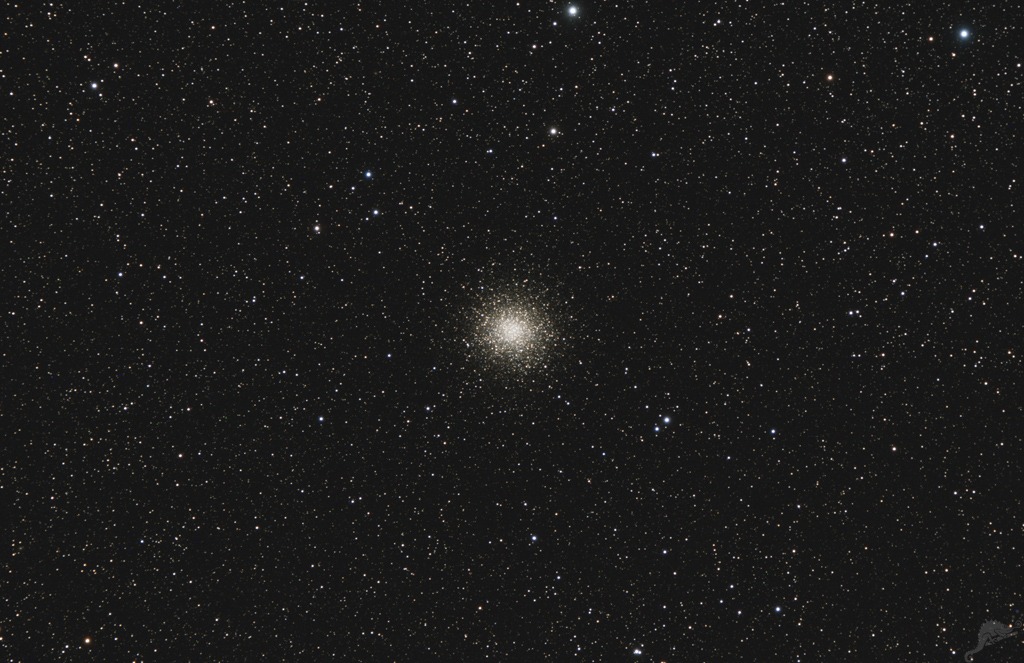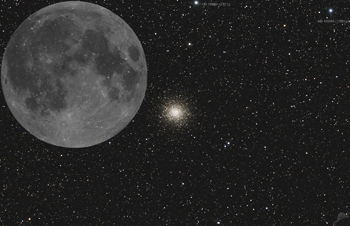 |
CHAMÄLEON + ONJALA OBSERVATORY DeepSky | SITEMAP HOME CHAMÄLEON |
|
 |
|||
| « back to overview Cluster | Load
higher resolution (1800 x 1200 Pixel 3500 x 2300 Pixel) |
Object description |

Messier 14 (NGC 6402) is a larger, bright globular cluster in the constellation Ophiuchus. With more than 1 million solar masses it is the most massive, but due to the extinction of foreground dark clouds the faintest of the 5 globular clusters - M9, 10, 12, 14 and 107 - in the constellation Ophiuchus. The absorption is only very uncertain known, therefore distances for M 14 vary between 30 000- and 70 000 lightyears.
M 14 contains about 150 000 stars and its physical diameter is estimated between 75 and 100 light-years. M 14 includes more than 70 variable stars, among them 55 RR Lyrae stars, according to Shapley the cluster is assigned to concentration class VIII. As with many other globular clusters, the age of the stars is estimated at 13 billion years.
A nova appeared in the cluster in the summer of 1938, an exceptionally rare event in a globular cluster. The nova was not discovered until 1964 on old photographic plates. In 1990, the Hubble Space Telescope was used to determine the exact position of the nova. For more information about the nova search with the HST, see NASA here und here.
M14 was discovered by Charles Messier on June 1, 1764, 2 days after the nearby globular clusters M10 and M12. Messier described the object as "nebulous and round" because he could not see individual stars with his small telescope. Frederick William Herschel observed the cluster in 1783 and was the first to resolve it into individual stars. On July 30, Herschel wrote in his observation diary:
 |
"On July 30, he wrote, "With a power of 200, I see it
consists of stars. They are better visible with 300. With 600, they are too
obscure to be distinguished, though the appearance of stars is still preserved.
This seems to be one of the most difficult objects to be resolved
..." A recent scientific publication on Messier 14 can be found at this URL. A detailed description of all Messier objects can be found here. « Click hereor the thumbnail to load a large annoted image and a size comparison to the full moon. |
 |
 |
 |
 |
 |
 |
 |
| Sun | Moon | Solar System | DeepSky | Widefield | Miscellaneous | Spec. Projects |